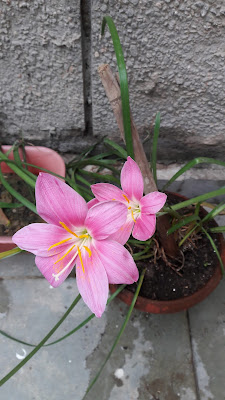Mind blowing 2015 Part -1
 |
| At the Lucknow Residency, revisiting history |
The journey begins at Lucknow. Here we are working with Self Employed Womens' Association (SEWA). It's a delight engaging with highly skilled 3000 women artisans of the traditional craft of embroidery known as Chikankari which is a product with Geographical Indicator or GI. We are trying to develop eco-friendly range of products which will reach both domestic and international markets by the end of 2017 and thereby increasing their income and create a sustainable supply chain model. Also we are assisting SEWA Lucknow achieve the next level of goals as a womens' organization for the invisible home-based workers and gain more negotiating power through collective bargaining. I discovered the beautiful people and the beautiful charming city where we learnt 'adab' and 'nazakat'. Tundey kebab, Biriyani and Basket chaat are cuisine appreciation courses on the way! :)
Next pit stop was Kota in Rajasthan. Kota is home to another GI product Kota Doriya. This is a fine traditional Rajasthani weave made from lightest of cotton. This is very akin to Chanderi or Maheshwari from Madhya Pradesh. Average handloom weaver is able to weave not beyond 12 inches one day because of its delicate nature. Here we are enagaging with Kota Womens' Welfare Association (KWWO), 1000 women strong, in upgrading their products for the domestic market. Also how they can increase sustainability by becoming raw material suppliers for value-chains such as SEWA Lucknow for finished garments. The women are the weavers of the community and their spouse run the businesses. Being a closed community steeped in tradition it is now making an attempt to move towards balance. The daughters also made a beeline to our training and wanted to learn how to gain financial and social inclusion in the future. The enthusiasm of the young ones is infectious and always keeps me inspired. The ladies started moving out of their comfort zone and ventured to discover markets and design requirements of contemporary buyers by joining in exhibitions in Delhi.
 |
| Initial Financial Literacy training |
Not only did I see the beautiful Udaipur but also went to the slumberous, verdant block of Salumber, some 80 kms away from Udaipur. Here Vishwas Sansthan is engaging with 1500 women with no source of livelihood and collectivising them in SHGs. There was no livelihood opportunities or skill that were traditional so we had a clear canvas to draw on and we went asked them how could we help them. The smart bunch that they are, they wanted to go straight into the 3Rs of environmental sustainability reduce, reuse, recycle. They told us that they will source garment manufacturing waste scraps from Ahmedabad, which is closer to Salumber than the state capital of Jaipur and they were ready to learn and go the extra mile for training by learning to make some cash from trash. So inception of greener environment product such as fashion jewelry was started. They simply lapped it up and started producing marketable goods from day one. I was floored by their charm and diligence. Today the products are selling in Udaipur, Delhi and the ladies are already training their counterparts in Kota with financial literacy and institution building.
 |
| Introduction to Jewellery making |
My Rajasthan sojourn came full circle with visiting the Jaipur Textile Park at Bagru. The sustainable textile journey had begun here six years ago and the park has a CETP which has a capacity of treating 500mld per day. Today several leading exporters of Sanganeri hand block prints such as Soma, Rangotri, Ojjas housed here. As this was the first successful attempt at building a cleaner environmentally safe option we at Traidcraft are extremely proud of and rightly so of our achievement here. Now Government of Rajasthan is building some more in the state.
 |
| At JITPL Bagru |
Now, while I wrapped all the previous work I set afoot for Coorg on a pleasure trip, meeting old friends and relaxing. Ate some awesome Coorgi food and figs, the kind which makes it an unforgettable journey.



Comments